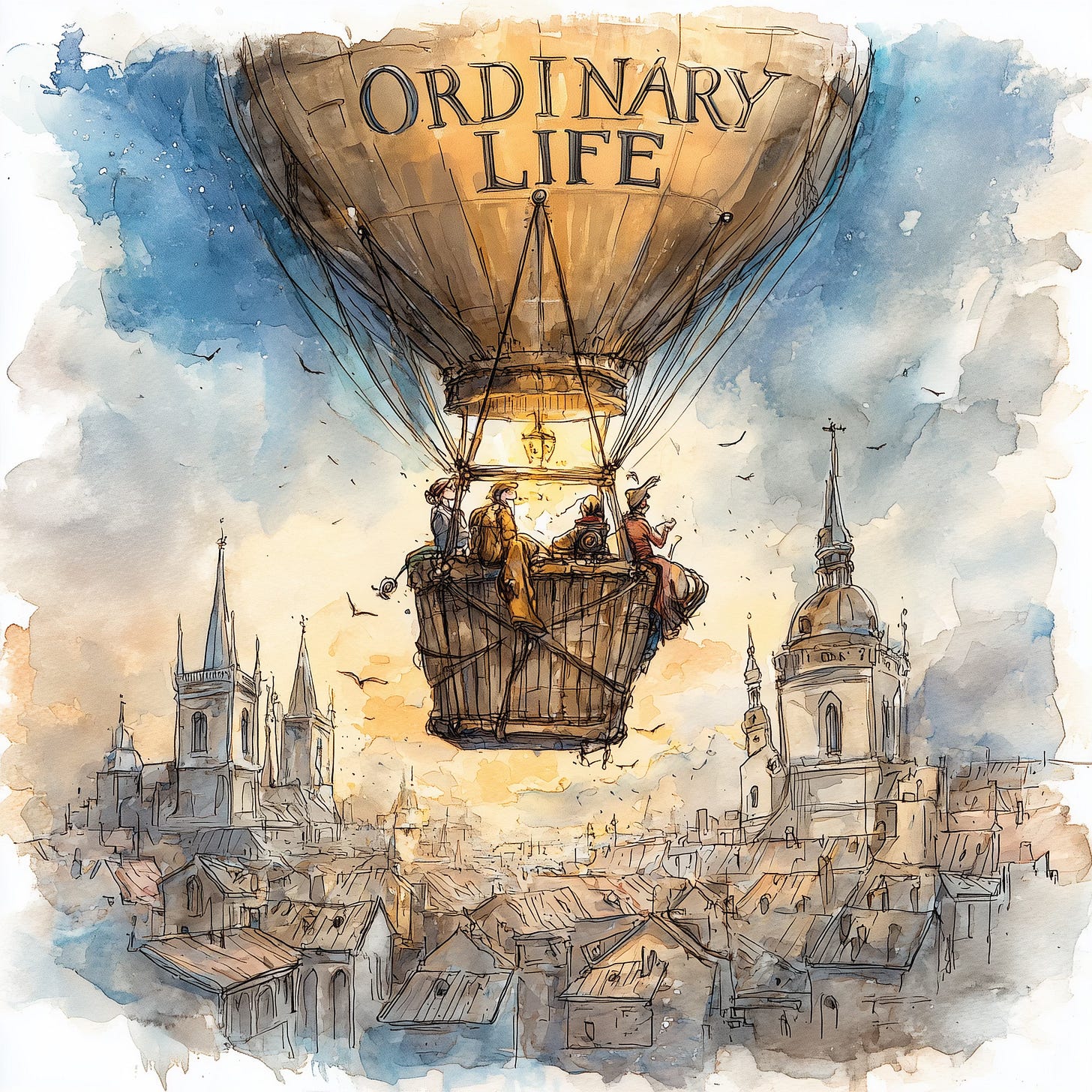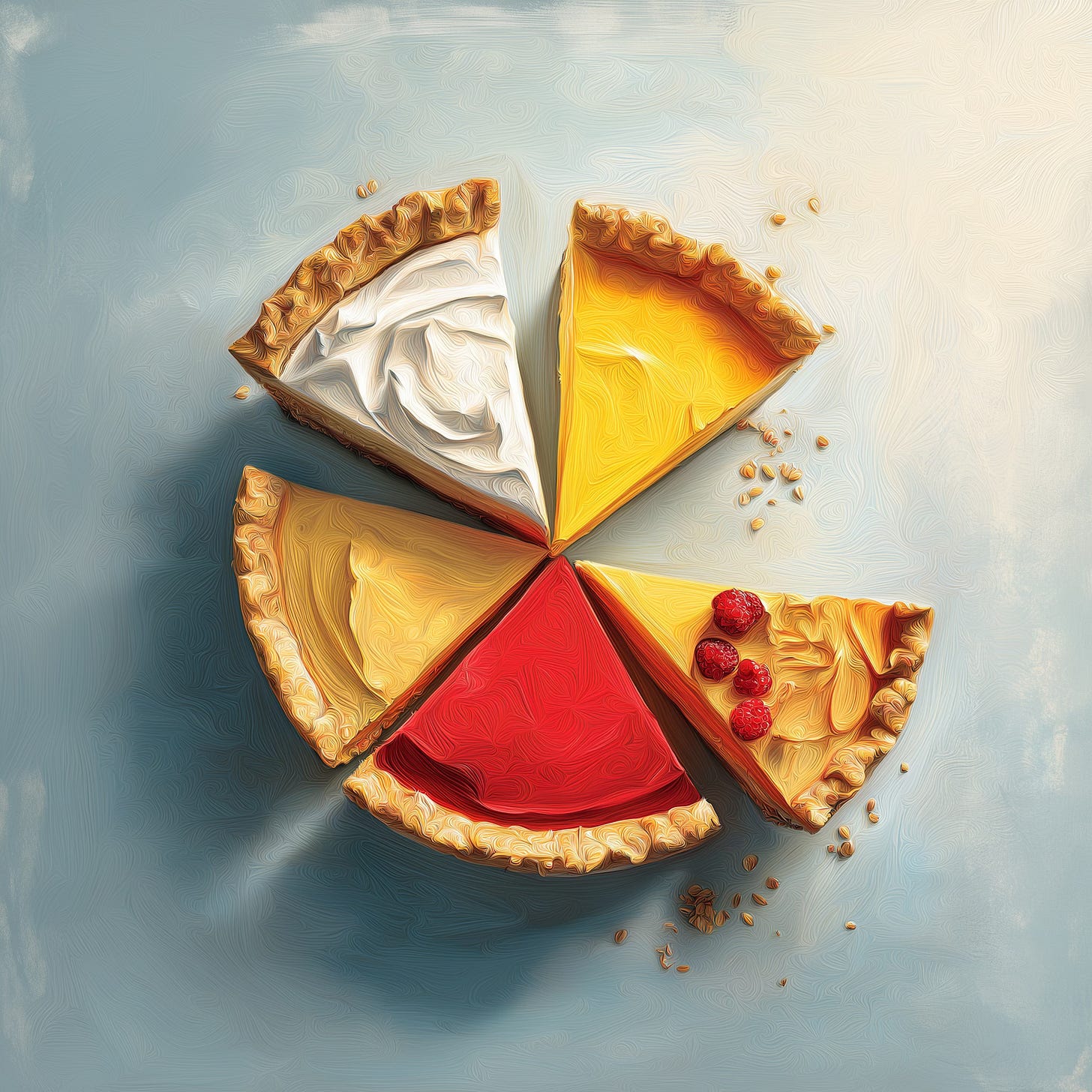Living Better, Measuring Worse
How we gained comfort, lost perspective, and keep asking the wrong questions
“I believe we define middle class inappropriately. The economic definition tends to describe purchasing parity between the affluent and the average which may indeed be widening BUT…as a child of lower middle class I would argue the spread of our standard of living is increasing rather than widening. When I look at the affluent, the day to day living requirements and options (healthcare, housing, nutrition, and transportation) seem to be narrower than in the past. I could be wrong but I believe I am right and I believe the economic definition is a poor use of comparison.”
—Joe Clark
The Middle Class Problem (Or Is It?)
If you listen to economists, the middle class is always in crisis. Shrinking! Squeezed! Endangered! You’d think the whole group was on the brink of extinction, like pandas—only with more credit card debt. Their favorite trick is to define the middle class by relative income: if you make two-thirds to double the national median, congratulations, you’re middle class—at least until the next round of graphs shows how much more the rich got than you.
And yes, by those charts, the rich have been sprinting ahead since the 1970s while the middle trudges along. Median middle-class income has grown about 50% since 1970, while upper-income grew over 60%. That’s a gap. And the share of national income held by the middle fell from roughly 62% to ~43%. Cue the ominous music.
But here’s where Joe’s ponder cuts through the gloom: what if that definition is a poor comparison? What if “middle class” should be measured less by the distance to the yachts of the elite and more by the actual life you get to live?
The Astonishing Rise of “Ordinary” Life
Step back for a moment. In 1950, a full quarter of U.S. homes had no flush toilet. By 1970, only about a third of households had air conditioning. Flying was a luxury for business tycoons, and sushi was bait, not dinner.
Today? Even modest-income families often live in homes with two bathrooms, central heat, and yes, air conditioning (unlike Europe)—the single most underrated miracle of modern life. Cars are safer, faster, and more reliable. Smartphones put more information in our pockets than any library in the 1970s. And the middle class—despite supposedly being “squeezed”—eats avocados in January, blueberries in February, and orders Thai food on Tuesday nights like it’s nothing.
If you brought someone from 1970 forward in time and gave them a middle-class lifestyle today, they’d assume they’d accidentally married into royalty.
So, while the income spread between the middle and the top has widened, the lifestyle spread has narrowed. Sure, the rich can buy private jets, but you can still fly to Paris in coach and get there in the same seven hours. The billionaire might sleep in 1,200-thread-count sheets, but you’re still sleeping on memory foam with climate control and indoor plumbing. That wasn’t always true.
The Real Middle
Maybe the way we talk about “middle class” needs a reset. Economists are obsessed with relative pie slices—who gets how much of the national income. Useful, yes, but not the whole story. Because the pie itself has grown so absurdly large that even smaller slices feed better than the whole pie did for our grandparents.
This isn’t to dismiss the challenges: home prices in some cities, tuition debt, healthcare costs. Those are real pressures, and they matter. But they exist alongside a reality Joe is right to point out: the absolute standard of living has risen for nearly everyone.
In other words, you can be both “falling behind” the rich and living better than any previous generation at the same time. That’s the paradox of modern prosperity.
So maybe “middle class” is less about the middle of an economist’s spreadsheet and more about the middle of daily life. The messy, ordinary middle where most of us are not poor, not rich, but surrounded by comforts that kings couldn’t have dreamed of. Indoor plumbing, air conditioning (again, if you don’t live in Europe), antibiotics, Netflix, and, if you’re lucky, a coffee machine that doesn’t explode.
Not bad for the middle.
When the Map Stops Matching the Terrain
Here’s the bigger plot twist: in a world where science fiction keeps turning into product releases, “middle class” isn’t the only stale label. Some of our favorite metrics are now like using a sundial to time a rocket launch—charming, but please don’t stake your life on it.
Old standbys like GDP, inflation, homeownership rates, or “college degree attainment” once told us how we were doing. But when your phone replaces twenty gadgets, AI does work invisible to the statistics, and kids learn coding on YouTube instead of in lecture halls, those measures start missing the story.
If we keep staring at yesterday’s dashboard, we’ll make tomorrow’s worst decisions with great confidence.
So what should we watch instead? Think simple:
How long do you have to work for it? Whether it’s a plane ticket, a laptop, or a medical test, the true price isn’t just dollars—it’s hours of your life.
How quickly can you get what you need? Waiting months to see a doctor or start a new skill is a drag. In a fast world, speed is as valuable as money.
How safe are you if things wobble? Savings, community, and flexibility matter more than neat charts about “median wealth.”
How many doors are open? The middle class thrives when it has options: job choices, education paths, travel routes. More doors mean more resilience.
Where is your attention going? We measure calories and dollars, but the real tax is the hours we lose scrolling. That’s the budget line no one talks about.
These aren’t high-tech formulas. They’re the everyday questions that reveal whether progress is making life better—or just noisier.
And here’s another reality check: sometimes the field itself shifts under your feet. Housing is more expensive, and since the money-printing days of COVID, just about everything is more expensive. Try raising a family in the middle of New York City: you and your partner both working 24/7 just to balance the checkbook. How do you fit in the American Dream—space to live, downtime, a family—when the field you’re playing on keeps changing?
Maybe the problem isn’t that you’re playing the wrong game, but that you’re playing the right game on the wrong field. You can’t win a hockey game on a football field. Sometimes a change of venue is what makes the middle class feel fulfilling again. Sorry, you can’t have everything. That’s life. But you can have everything that’s actually important to you.
And here’s the bonus: there are even places in America that want you to move there and will pay you to do it. Seriously. Check out MakeMyMove.com—a site dedicated to connecting people with towns and cities that are eager for new families and talent. Sometimes the American Dream isn’t about grinding harder in the same broken field—it’s about moving to one where the game makes sense.
Wealth Isn’t a Zero-Sum Game
Another blind spot in the old way of thinking: we talk as if wealth is a fixed pie, and when someone like Elon Musk takes a giant slice, the rest of us are left with crumbs. But that’s not how value creation works.
Technological leverage allows outliers to create enormous wealth in impossibly short time frames—often by building things that didn’t exist before. Electric cars, reusable rockets, global platforms, mRNA vaccines—these don’t subtract from someone else’s bank account. They expand what’s possible for everyone.
It may feel strange to see individuals stack up billions while we argue about grocery prices, but the key insight is this: their gains don’t automatically mean our losses. In fact, when done right, they often mean our lives get cheaper, faster, healthier, and more connected. The real risk isn’t that someone else creates too much wealth—it’s that we cling to outdated measures and miss the opportunities those creations unlock for the middle.
✨ Seed Thought: Don’t measure your life with rulers that stopped telling the truth. Celebrate the astonishing rise in everyday living—and then ask better questions. How long does it take to get what you need? How safe are you if the ground shakes? How many doors can you walk through? And, most importantly, what’s happening with your attention?
Remember: wealth is not a zero-sum game. When others create enormous value, the middle can win too—if we choose the right definitions and keep our eyes on the right dials.
With better questions, the middle doesn’t just hold—it leads.








